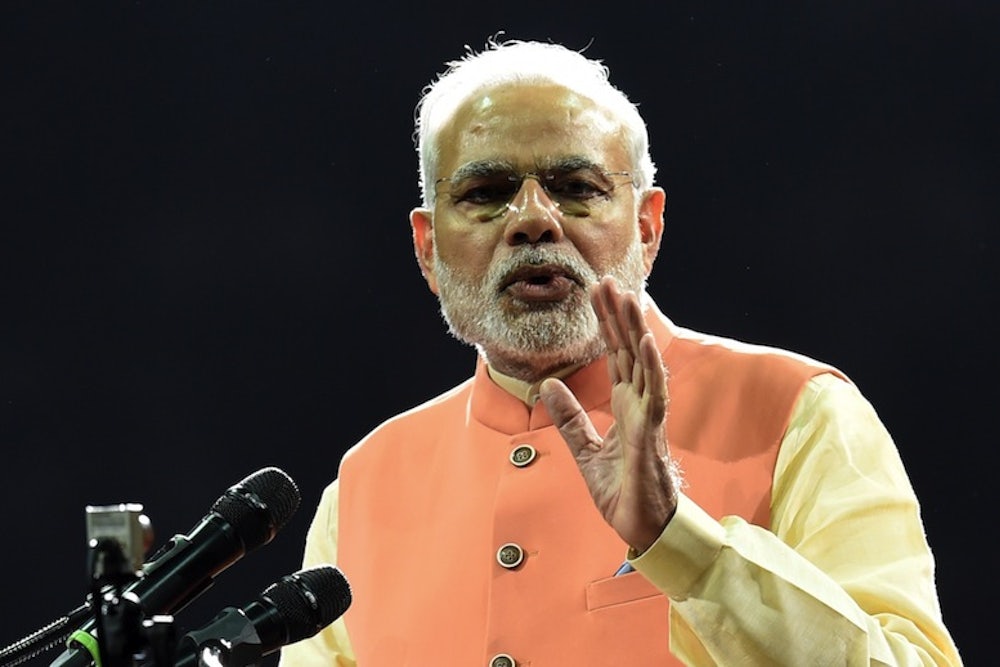When President Barack Obama said "nobody gets a pass" on fighting climate change in a speech last week, he might as well have been speaking directly to India. India’s willingness to reduce greenhouse gases is a major wild card in negotiations for a global climate treaty next year. It's difficult to imagine a meaningful agreement that doesn’t include some kind of commitment from what is, after all, the country with the second largest population in the world. But Indian officials haven’t been very enthusiastic about the prospect. Just a day after Obama spoke, India's environment minister Prakash Javadekar told the New York Times, “What cuts? That’s for more developed countries."
Addressing those differences will be a major topic of discussion on Monday, when Obama and newly elected Indian Prime Minister Narendra Modi hold their first-ever meeting in Washington. It’s easy to see why India’s emissions are so important. India is already the world’s fourth-biggest polluter—after China, and the U.S., and European Union combined. Last year, its emissions rose over 5 percent, as this graph from the Global Carbon Project shows:

India’s emissions are rising at this pace because it is developing so quickly. More economic activity means a lot more pollution, particularly in a country with so many people. But India's officials say its unfair to ignore history—and they have a point. If you tally up the emissions that different countries have produced since 1870, India is responsible for just 44 gigatons. Compare that to the U.S., which has produced 370 gigatons, the most of any country in thh world. Even today, India's emissions on a per person basis are still quite low. And which country has the highest emissions per person? That would still be the U.S.

One reason Indian emissions are still low, per person, is that 400 million living there still lack power. Not surprisingly, India notes its "top priority" is expanding electricity to its population. "We will grow faster, and our emissions will rise," Javadekar said.
The discussions Obama and Modi have will be one of many to take place over the next year, not just between the U.S. and India but among all developed and developing nations. The question is not just how quickly should each group reduce emissions, in order to keep global warming under 2 degrees Celcius—the target that governments have endorsed in order to avoid the most catastrophic effects of a warming planet. It's also a matter of how much funding countries like the U.S. are willing to contribute to poor nations, in order to help them adapt to climate change.
There ought to be grounds for a compromise here. As Brad Plumer has pointed out at Vox, one study done for the United Nations shows that if carbon emissions from the U.S. peaked in the near future, then China’s could peak in 2030 and India’s could peak in 2040. In theory, all of those seem achievable, although for none of these countries would it be easy.
